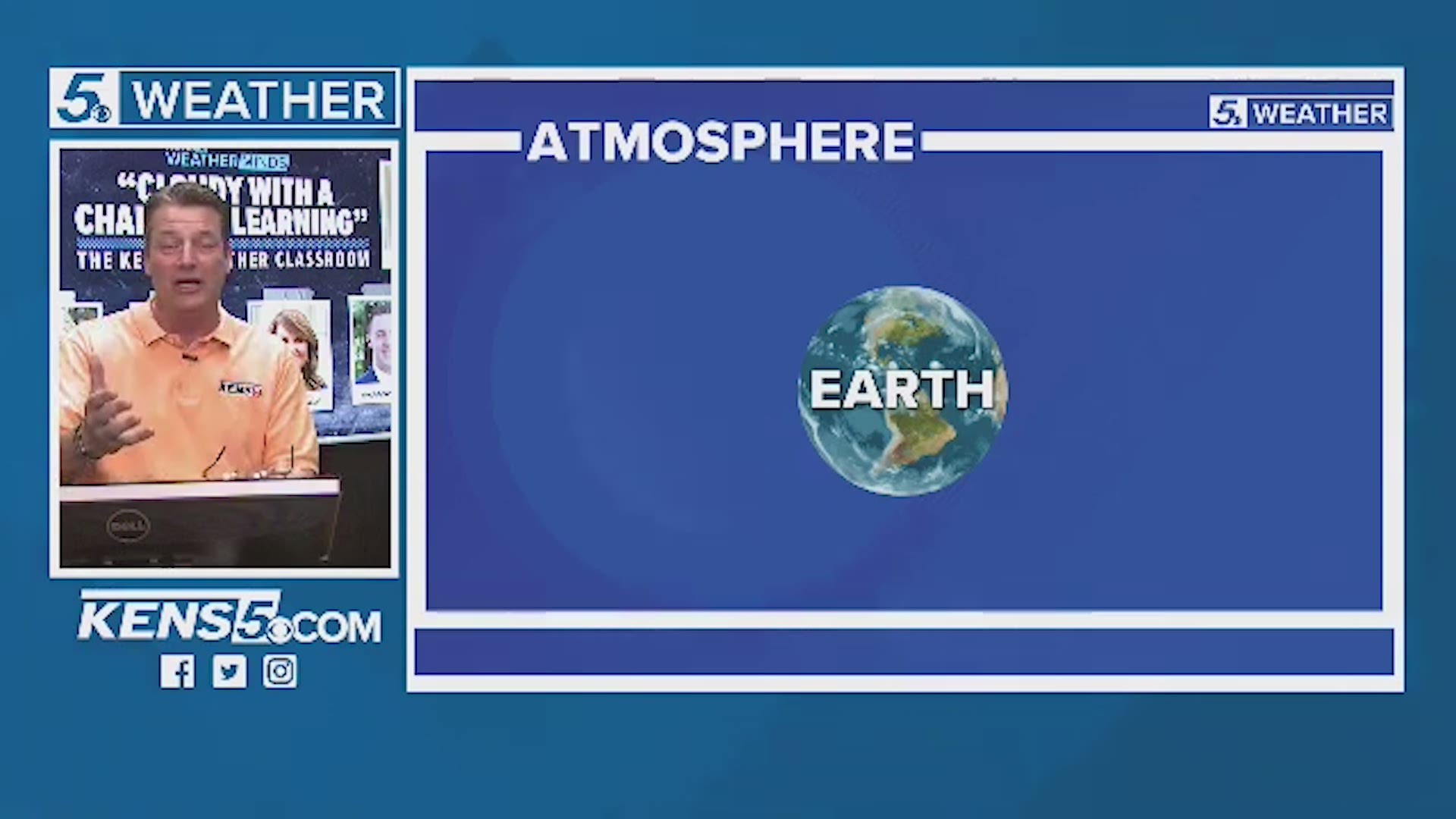SAN ANTONIO — The KENS 5 Weather Team is teaching lessons on weather while we are all at home, and on Monday, we talked about different layers of the atmosphere.
Our atmosphere is divided into layers based on temperature.

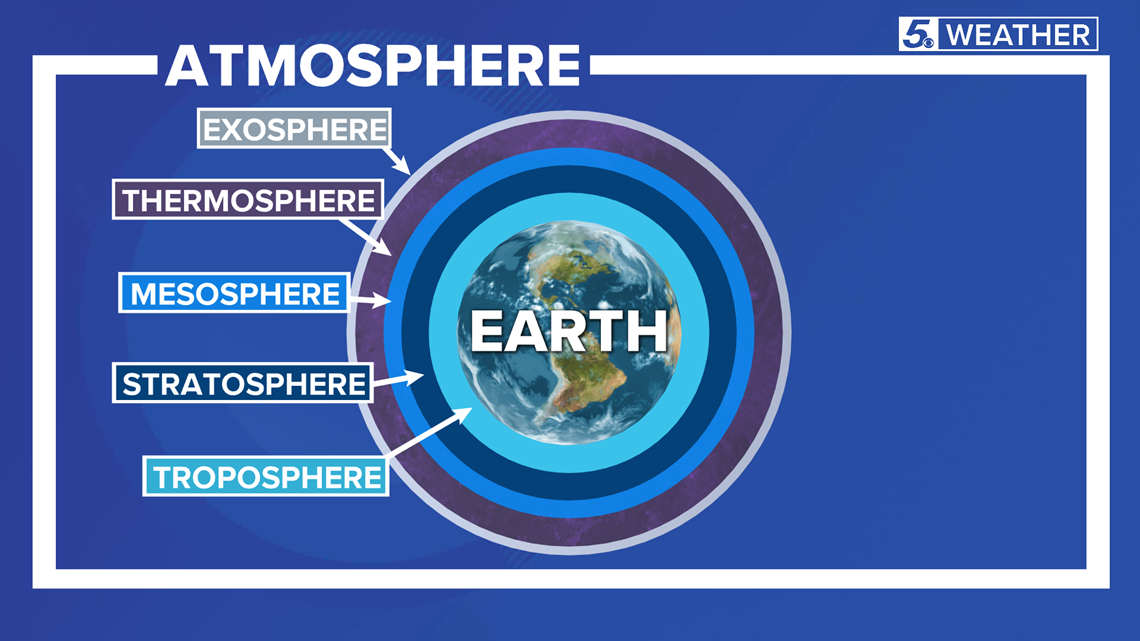
Let's start with the troposphere. The air we breathe and most of our weather is in the troposphere. This layer is about 5 to 9 miles thick above the Earth's surface. Thickness of this layer can change depending on where you live on Earth.
Clouds, birds, and wind are found in the troposphere.

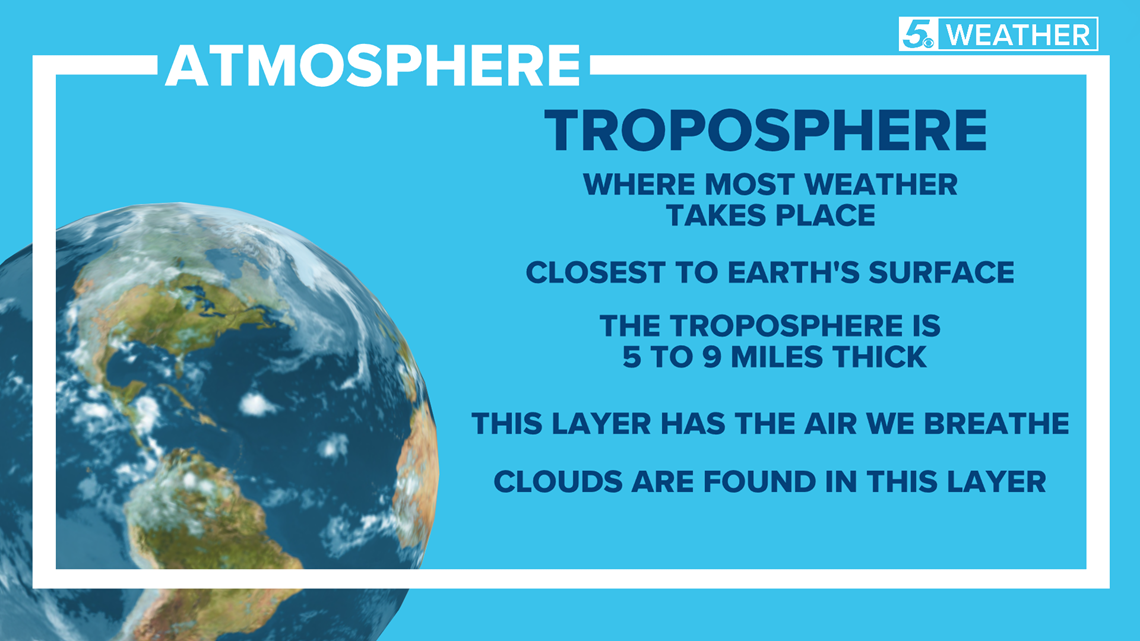
Did you know the jet stream is located in the mid to upper troposphere.
The air in the troposphere is 78% nitrogen and 21% oxygen. Only 1% of the air is made up of water vapor, argon, and carbon dioxide.

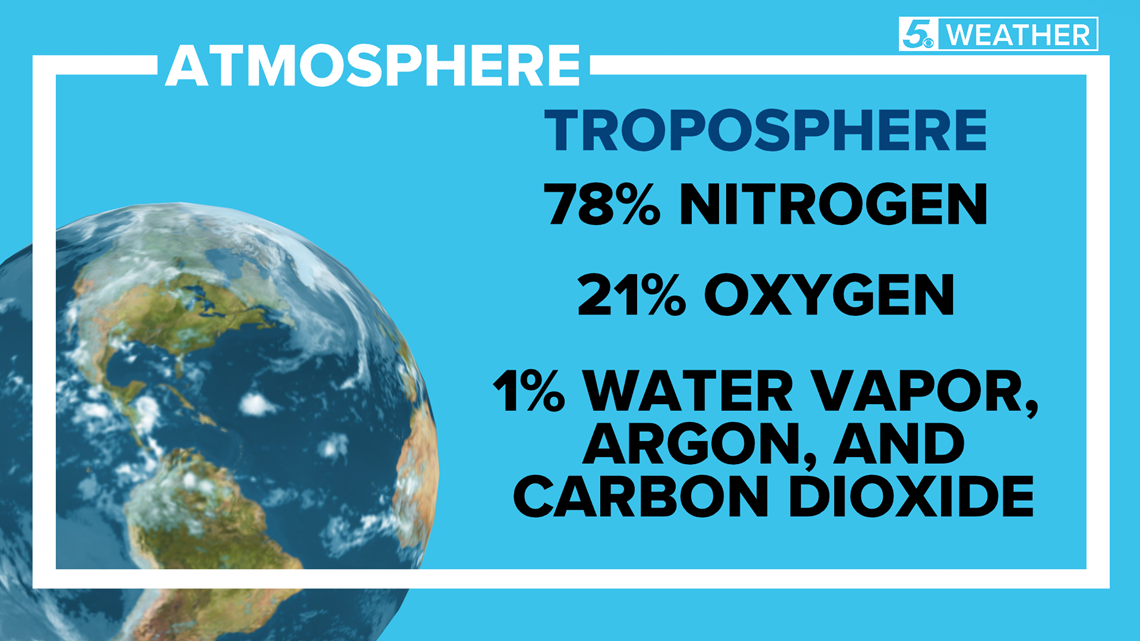
RELATED:
Above the troposphere is the stratosphere where there no storms or turbulence to mix the air. Commercial passenger jets fly in the lower part of the stratosphere to avoid turbulence.

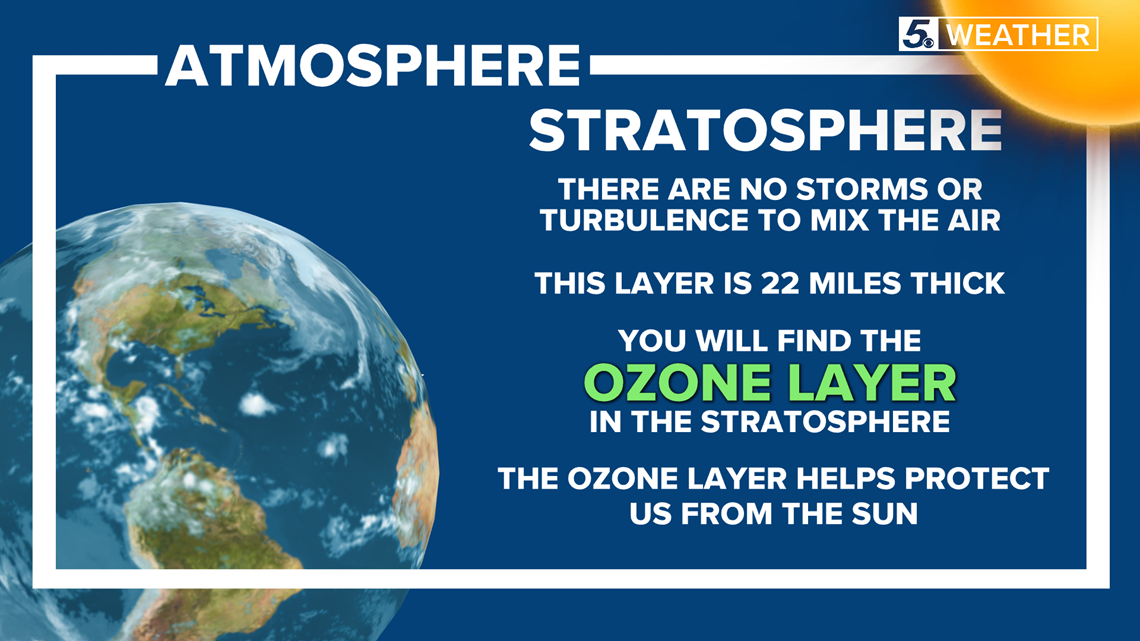
The ozone layer can be found in the stratosphere. The ozone layer protects the Earth from the sun. Think of it as sunscreen for our planet.
Temperature will increase with altitude in the stratosphere.
According to NASA, the stratosphere is about 22 miles thick. In fact, the mesosphere is also 22 miles thick.
The mesosphere is just above the stratosphere and meteors can burn up in this layer.

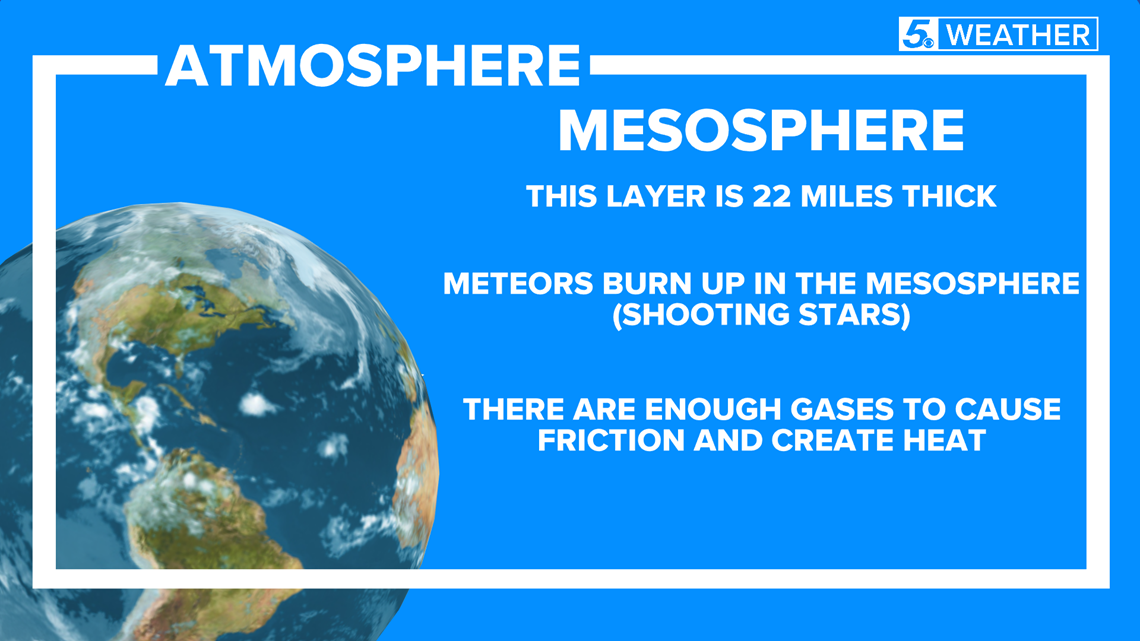
"Meso" means middle and gases are mixed up in this layer. The thickness of this layer also varies over the Earth. Air present in the mesosphere is too thin to breathe.
Above the mesosphere, we have the thermosphere. "Thermo" means heat and temperature will increase quickly in this layer due to radiation from the sun. This layer is about 319 miles thick.
The thermosphere is home to many low orbit satellites and the International Space Station.
Satellites help meteorologists see clouds over our houses, cities, and states. Satellites are used to help watch weather patterns and track hurricanes.

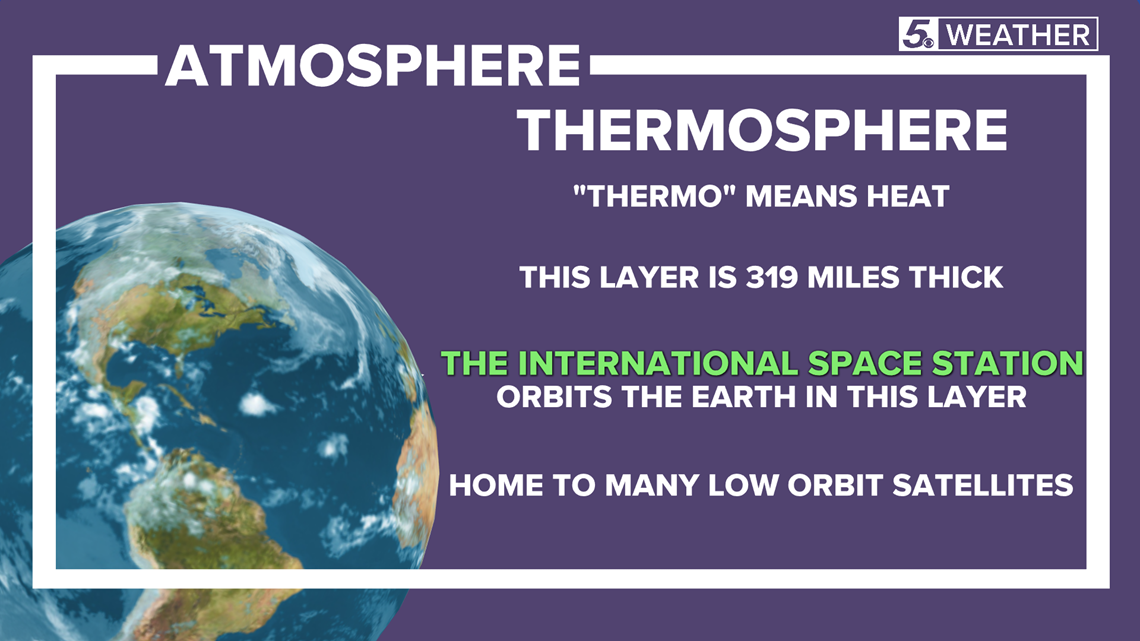
The outermost layer that separates our atmosphere from outer space is the exosphere. "Exo" means outside. According to NASA, this layer is about 6,200 miles thick which is almost as wide as Earth itself. That is a big layer!
Gases like helium and hydrogen can be found in the exosphere. There is no air to breathe and it is cold in the exosphere.


For more science lessons like this, join the KENS 5 Weather Team weekly on Facebook and Youtube live.

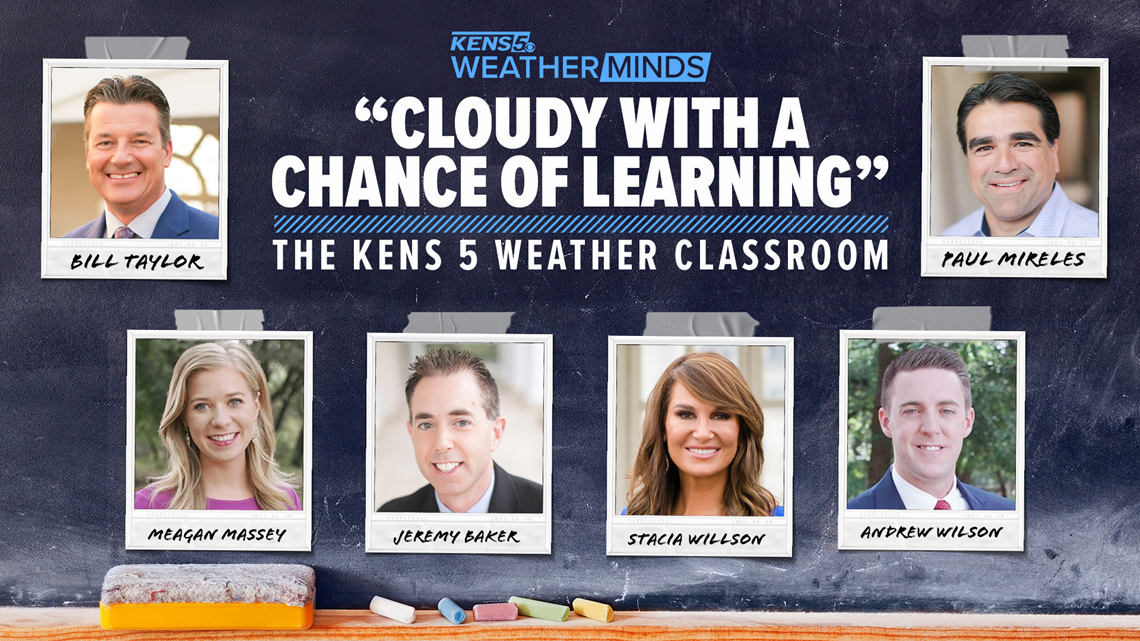

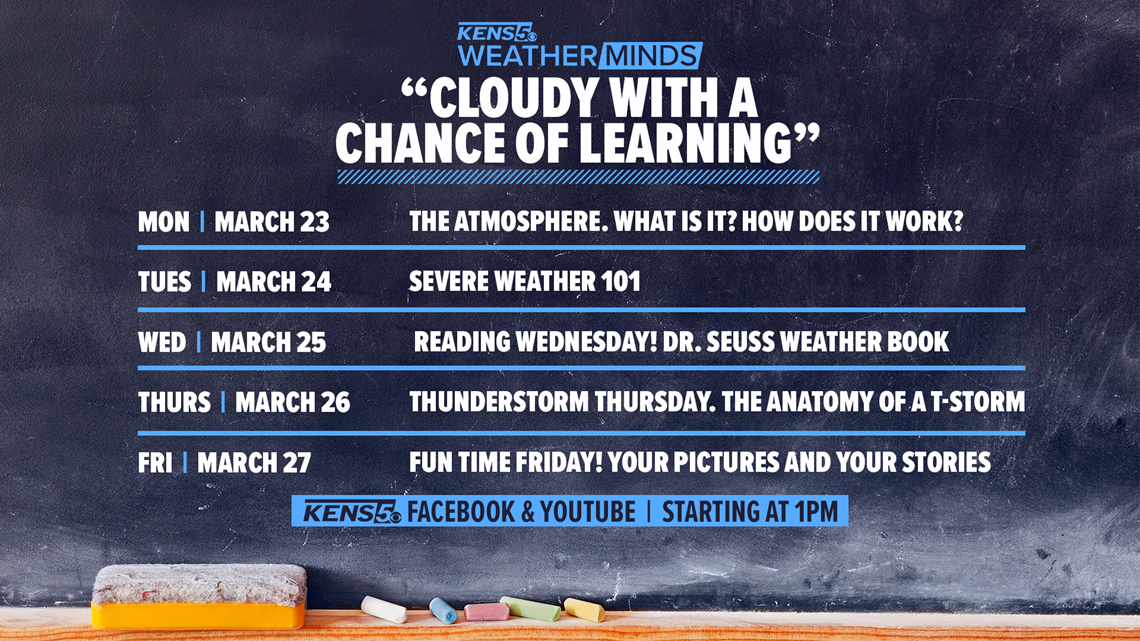
PEOPLE ARE ALSO READING:
- Real-time updates: 2nd coronavirus death in Bexar County; Texas has over 1,000 cases
- Gov. Abbott to request SNAP benefits to be used for drive-thru restaurants
- Gov. Abbott to request SNAP benefits to be used for drive-thru restaurants
- Alamo Colleges creates 'COVID-19 Student Impact Fund' to help students in need
Don't forget you can download the KENS 5 app for the latest news and weather information each day while you are on the go.

